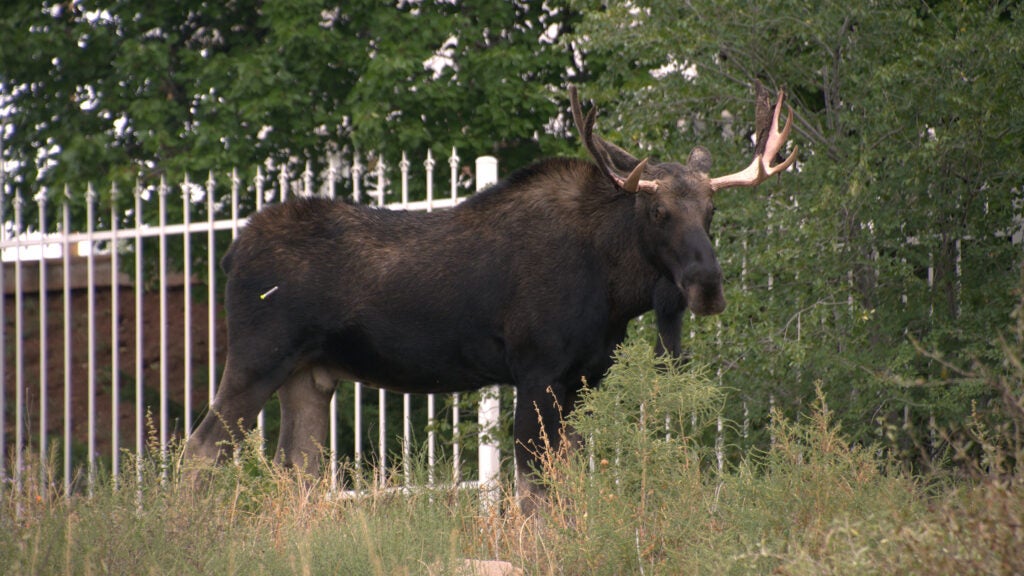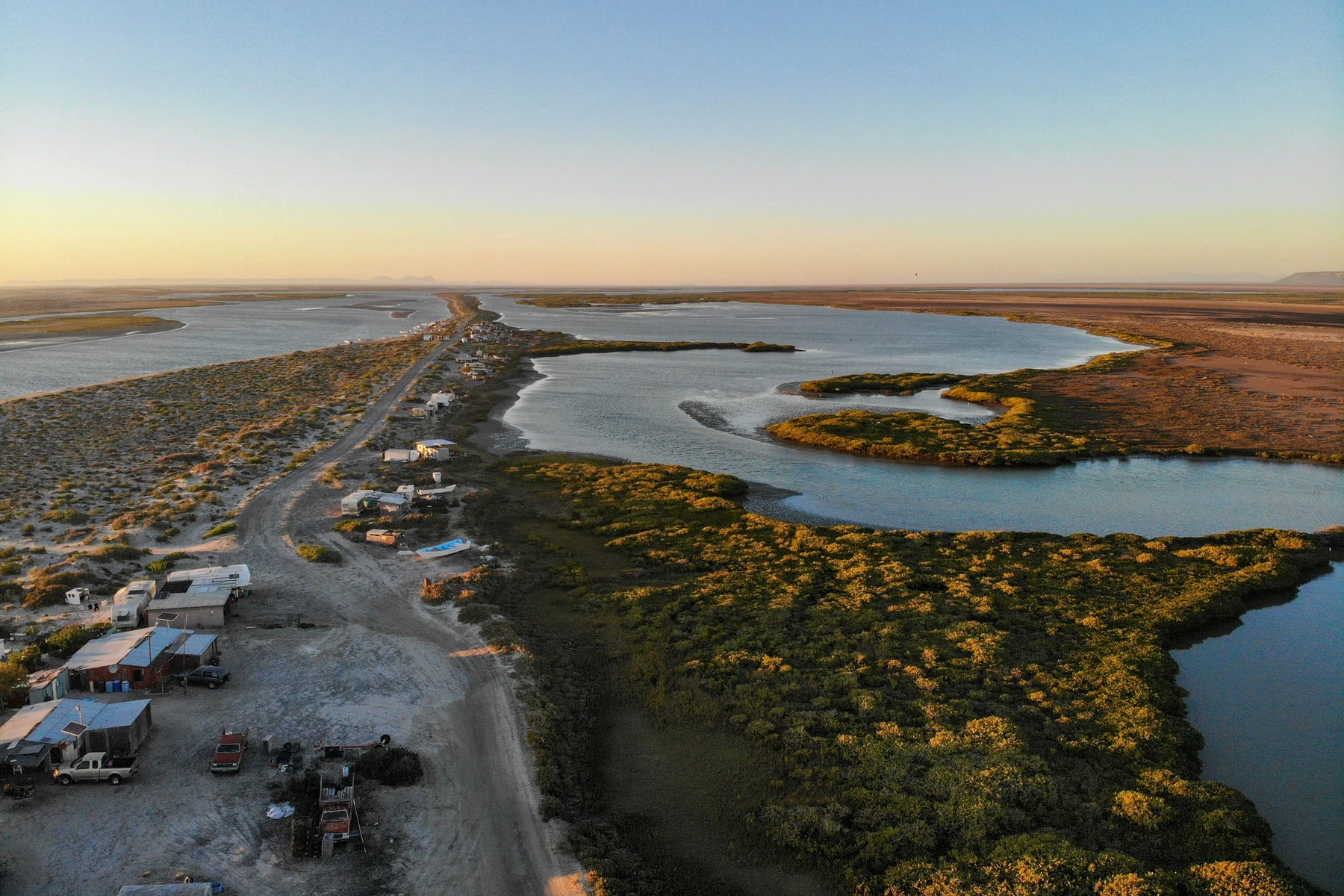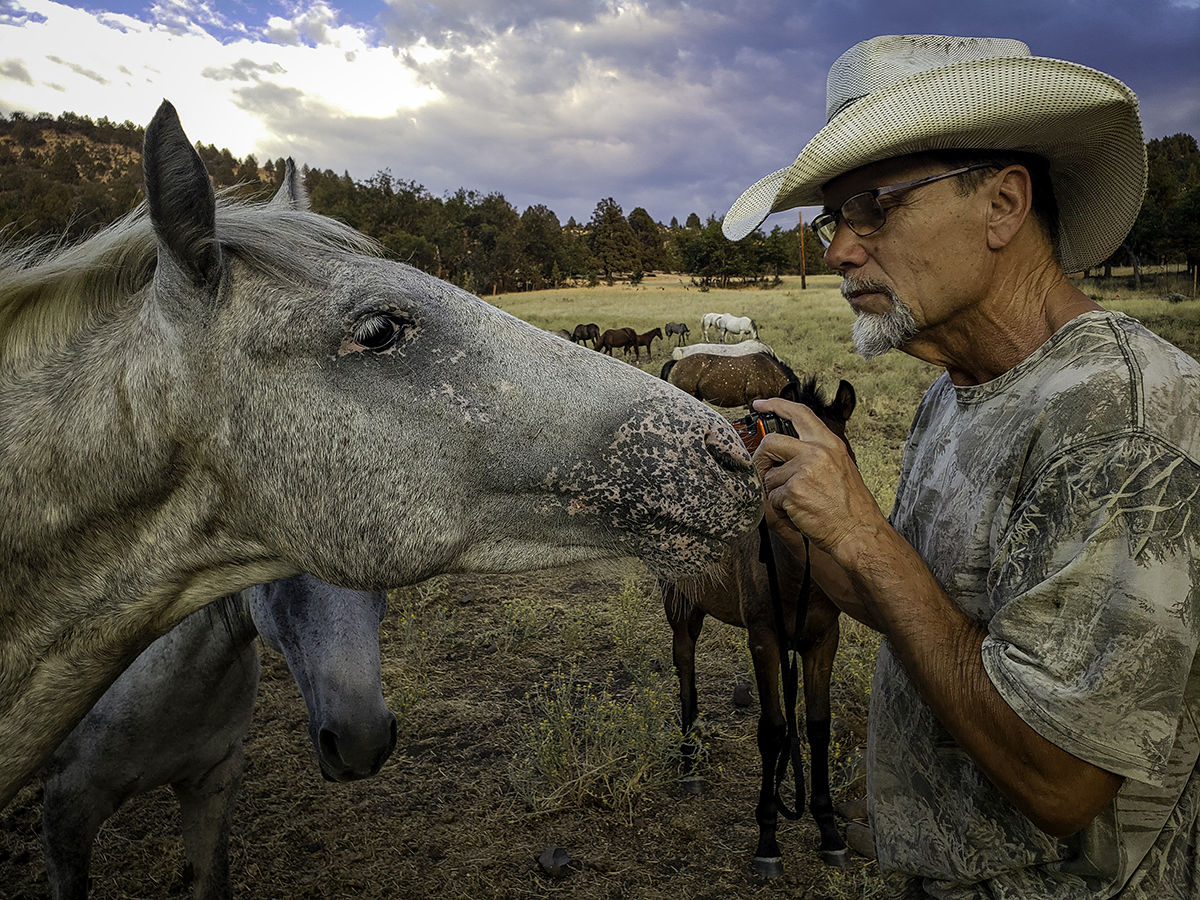Here’s a thought experiment: How many wild animals, throughout history, have had a name? I don’t know how you would figure out the answer to that question in absolute numbers, but if you somehow had a graph of this data, throughout history, I think it would have a sharp, hockey-stick-like increase in the last decade. Between cell phones and game cameras and Ring doorbells, it seems like we’ve got more information about individual animals than ever. Most of the time, the animals aren’t named. The captions just say ‘a deer sheds its antlers’. ‘A puma. A coyote.’ But every now and then, an animal captures a larger share of the internet’s attention. Someone gives it a name. Someone makes it an Instagram account or a Facebook page, and suddenly, a wildlife star is born. There were wildlife celebrities before the internet, like Smokey Bear. But now, they’re everywhere.
There’s Otis, the bear in Alaska. P-22, the mountain lion who lived in Griffith Park in Los Angeles. Freya, the walrus, named after the norse god of love and beauty, who sunbathed on boats and yachts up and down the Atlantic coast of Europe. 399, Grand Tetons’ most photographed grizzly bear. Lefty, the Harlem deer with one antler. Flaco, an owl on the run from the New York Zoo. And Carl—actually there are two famous Carls: an outlaw turkey from Wisconsin, and an “unusually friendly” San Francisco coyote.
When Wispria contributor Stephanie Joyce started thinking about this phenomenon, she had a lot of questions. Like, what makes a good wildlife celebrity? What do we want from them? Why can’t we look away? Here’s Steph.
Stephanie Joyce: I had my first encounter with an animal celebrity in the early 2000s. I grew up in Juneau, Alaska, and back then, there was a famous wolf who lived there. He was this big black wolf, a loner, and he showed up one fall near the Mendenhall Glacier. Now, if you’ve never been to Juneau, the glacier is basically right in the middle of town. In the winter, when the lake in front of it freezes over, people like to go out hiking and cross-country skiing on it. And this is Alaska, so there’s wildlife pretty much everywhere. Bears, eagles, whales. You see them all the time. But not wolves. They tend to stay away from people.
This wolf was different. He would wander out onto the lake when people were skiing and try to play with their dogs. And at first people were pretty freaked out by it, this huge black wolf trying to play-fight with dogs half his size. But he ended up making friends with some of the dogs eventually and he quickly became a local celebrity. Someone even gave him a name, Romeo. And for six winters Romeo just kept coming back. This was very early days for social media, but he was in the paper all the time.
Then, in 2009, Romeo disappeared. It eventually came out that he had been killed by two poachers. It’s not clear whether they targeted him because of his celebrity, but the fact that Romeo was pretty habituated to humans made him an easy mark. I remember thinking at the time that people had loved him to death.
But his story also probably complicated some people’s ideas about wolves. Made them seem less scary. So maybe he saved some other wolves. Overall though, it seemed to me like celebrity was kind of a bad deal for Romeo.
Fast forward to 2022. I live in New Mexico now. And there’s a fair amount of wildlife in New Mexico.
It’s not Alaska, but I see the occasional elk or bobcat or coyote. What I don’t see are moose. Because moose don’t live in New Mexico. Or at least not according to any recorded history. So, it was pretty surprising when in December of 2022, a guy driving down from the ski area in Santa Fe took a video of an absolutely enormous bull moose. The moose was cruising uphill in the opposing lane at probably 30 miles an hour.
Newcaster: Look at this. We wanna show you a video of a moose sighting in New Mexico. This video was taken by Justin Rogers near Ski Santa Fe.
Sephanie: Obviously, it made the local news.
Newcaster: This is him, a bull Moose that is believed to have traveled south from Colorado. So far south this guy is now trotting into our history books.
Stephanie: The moose, as I learned from the news reports, had actually been moving south through New Mexico for months, and along the way he’d picked up a name.
Martin Duran: And it’s Marty Moose. It’s not Marty the Moose. ‘The’ is not his middle name. It’s just Marty Moose.
This is the guy who named Marty. His name is Martin (mar-TEEN) Duran, but he swears he didn’t name the moose after himself.
Martin: The moose on National Lampoon’s vacation is named Marty Moose. If you’re familiar with the movie. They’re, the whole family’s taking a family vacation to California to Wally World. The mascot for Wally World is Marty Moose. So hence Marty Moose. Had nothing to do with my name, nothing to do with my name.
Stephanie: It’s catchy.
Martin: Yeah.
Stephanie: Martin lives about 50 miles north of Santa Fe, near a town called Mora. He’s a rancher and a hunting guide. And on the day he first heard of Marty, Martin was in the hospital, getting surgery.
Martin: And when I got outta the procedure, my phone was just blowing up with all these texts and there’s a moose on your property. And then pictures started rolling in and I went the next day and I didn’t see him during the day. Then that evening I was just driving up and down Highway 518 that goes right through Mora—that’s where they had seen him—and it was like a parade. It was like a big traffic jam in Mora ’cause everybody was driving the area looking for this moose.
Sephanie: So you didn’t go straight from the hospital to look for the moose but you know, just basically.
Martin: Right, the next day. The next day, yes. Still. And I had, uh, my gallbladder removed. And they told me to stay home, but I had to go see the moose.
Stephanie: I’m imagining the whole, you know, small town phone tree got activated and everybody’s like ‘The moose! The moose! The moose!’
Martin: Yes. It was something like out of Andy Griffith, everybody was calling everybody and everybody was calling their people and their people and just cars parked everywhere. There was a couple of, uh, DOT trucks, which is the highway department, they had their flashers on kind of directing traffic, but everybody was there standing on top of their hoods, on top of the roof of their trucks, trying to get a glimpse of him. And several people did. I just caught the back of him, but several people got really good pictures of him.
Stephanie: I know, it’s hard to believe, but we are still talking about a moose. But that’s the magic of celebrity. We feel blessed even by a glance in our direction. And just like people feel compelled to share blurry restaurant selfies with a celebrity A-lister in the background. People in Mora felt compelled to share the photos of the moose, mostly on Facebook.
Now, Martin is a big Facebook guy. He has twice as many friends on the platform as there are people in Mora. So when he started seeing people’s posts, he thought ‘hey, I should make a group where everyone can post those.’ A wire service for the moose paparazzi.
By the time Marty made it to Santa Fe and onto my radar, there were close to a thousand people in the Facebook group. After the news reports, a few thousand more joined.
Today, the Marty Moose Fan Club has 22,000 members, which is a lot of people excited about a moose. In fact, it works out to roughly one fan for every free-roaming moose in the western United States. And the members of the group are not just excited about Marty, but in many cases, they’re really excited about Marty. Like the woman who wrote and voiced a children’s book about him.
Ms. Benina: There’s a moose on the loose and he’s footloose and free. We don’t have moose, so how can this be?
Martin: She wrote a whole book on it. She wrote a whole book on the, on Marty.
Stephanie: Yeah. I thought the title was pretty good. Footloose Marty Moose.
Martin: Yes, yes. Footloose Marty Moose. That’s right.
Stephanie: Then there’s the norteño standup comic who did a bit about Marty coming to New Mexico for some time away from his wife…
Gabriel Vega Aka Carlos Medina: Órale. Marty the Moose here with a public announcement to all the gente from Nuevo. Gracias for the love you’re showing me on social media, gracias Gabriel for letting me hang out here in your office. Pero que jodido. You guys threw me under the bus. Last year I gave the huerta over here to Nuevo to get a break from my vieja and my plebe porque me esta metiendo loco al ajeno. Anyway, you guys started posting Marty’s here, Marty’s there, Marty’s everywhere. And she got all mad and she calls me….
Stephanie: And then there are the merch peddlers. When I joined the Facebook group, there were constant posts from people who had designed Marty stickers, Marty stuffed animals, Marty tattoos.
Newscaster: Well, he has become quite the star in the state. Marty the moose has been spotted all over Northern New Mexico and now you’ll be able to spot him on a T-shirt near you.
Stephanie: People have, people are, you know, investing all of this time and energy into like, making art about Marty. What do you think it is? Like, why are people so obsessed with this moose?
Martin: I, I don’t know. I, it, it’s odd that he be— I guess ’cause we don’t have ’em in New Mexico. Basically we don’t have moose in New Mexico. And I think just the public is just, you know, in awe that he’s here. And the people that have seen him are just amazed at the size and the, he’s just so big and you know, it’s not something you see every day.
Stephanie: In other words, it’s the novelty of the whole thing. Which is true for a lot of wildlife celebrities. They’re wild animals that appear in places where we don’t expect them. That was true for P-22, the Hollywood mountain lion. True for Freya the walrus, who was hanging out hundreds of miles from typical walrus habitat. True for Romeo.
Of course, being in an unexpected place isn’t enough. You also need publicity, which means hanging out around humans.
But after Marty’s brief cameo at the Santa Fe ski area, he disappeared. On the Facebook page, some people said out loud what I was thinking, that maybe Marty had met the same fate as Romeo. More optimistic fans speculated that maybe he had wandered back to Colorado. Then, after almost nine months of radio silence, in September of last year, 2023, Marty suddenly reappeared just outside of Santa Fe in a town called Tesuque. People were pretty excited about this minor miracle. The tenor of the comments thread reminded me of the cheering at a hockey game, ‘Marty, Marty.’
But Marty didn’t stay in Tesuque for very long. Just a few days after showing up, he wandered up and over the hill from Tesuque down into Santa Fe.
Tessa Mentus (KOB): This might very well be the end of the story for New Mexico’s southernmost moose ever…
KRQE: Santa Fe had a visitor that was too close for comfort. They captured a bull moose this morning, “near Grant and Rosario.”
Ryan Laughlin (KOB): Game and fish officials cornered Marty just outside of Fort Marcy Park and moved in.
Stewart Liley: You know, it was an interesting morning. So…
Stephanie: This is Stewart Liley. He’s the head of wildlife management for the State of New Mexico, and he was following Marty on his southward journey. Although, you won’t find him in the Marty fan club. And in fact, you won’t even hear him call Marty by name.
Liley: So we started getting reports of the moose when it actually was. You know, the moose caught the attention of the public.
Stephanie: Refusing to name Marty isn’t personal.
Stewart Lilely: You know, for the most part, we don’t name wildlife. Giving it a name or, or something kind of, it, it elevated that animal stature more than the rest of the species, right? And so we manage at the population level, not the individual level, right? And so from a wildlife biologist perspective, we’re concerned about how’s the population doing, how’s the whole status of it? And so naming an individual is very—I wouldn’t say taboo, but it’s very not what we do.
Stephanie: That idea, of managing populations, not individuals, is pretty foundational to the discipline of wildlife management, which exists because a lot of animal populations collapsed after European colonization. The solution we came up with was to give ownership of wildlife to the state. So now, decisions about where wild animals should live, and how many of them should live there, and whether humans can kill them, those are all made by the government, and managers like Liley. And that means most of us don’t really have to think very much about where wild animals do or don’t belong because wildlife managers do it for us. But when Marty wandered into Santa Fe, that question was suddenly in the spotlight.
Stewart Lilely: When we started getting reports of the moose in Tesuque, there was a little bit of a concern. And then when he got into Santa Fe, we started getting reports around, um, the cemetery. Um, and, and that was a definite concern for us. A lot of human traffic, human people.
Stephanie: And so basically from like the time you started getting those early reports that there was a moose in town, you were like, it’s time we’re, we’re, we’re gonna relocate this moose.
Stewart Lilely: Yeah, absolutely. So what we decided is, the novelty of this attracted crowds and put people in a place where it was dangerous to that animal and dangerous to people. And that was the, the, the decision on movement on this one.
Stephanie: It’s pretty typical for wildlife managers to move quote unquote ‘problem’ animals. Usually animals that threaten or inconvenience us humans in some way. But a moose can’t be whisked into a limo by security. And so even though Liley thought moving Marty was necessary, it was a decision he had really been hoping to avoid.
Stewart Lilely: So we, there’s a risk, there’s inherent risk with the moose when we tranquilize him, that there’s, there’s a chance of mortality, right? When you’re putting a human under for surgery, they always warn you there’s a risk, there’s an inherent risk of it. It’s low. But when you’re a human going in and an anesthesiologist comes in, they weigh you, they tell you not to eat, they tell you to do all these things. Where we’re guessing his weight, we’re mixing drugs at the site. We’re trying to make sure we get a good shot placement. And so there’s all these little factors that play into it when we, when we’re capturing him. We use a pretty safe drug, but there’s always that risk.
Stephanie: So what you’re saying is that was a very stressful morning for you.
Liley: Absolutely. Very stressful morning for me.
Ryan Laughlin (KOB): You can see some guys distracting Marty while onlookers filmed their rare visitor. Then Marty was shot with a tranquilizer dart. A couple minutes later, he was down for a nap.
Stephanie: After Marty went down, a whole army of people moved in and lifted him up into a stock trailer. A few minutes later, they reversed the drugs and he was standing again, with a bit of a dopey expression on his face.
Spencer Shaw (KOB): Officials guess Marty is four or five years old and weighed in at more than 900 pounds. So for the safety of the public and the moose, Marty was transported to the Colorado border.
Tessa Mentus (KOB): You know, Marty brought so much joy to so many people hoping he finds happiness up there. Mm-Hmm. In Northern New Mexico.
Stephanie: For Stewart Lilely, this was the best possible version of the story. A win for wildlife management… with Marty safely back on the border of moose land… never to be heard from again.
Liley: He just walked straight outta the trailer with no, no issues. So it was, it was a great thing for us. It was nice to see it just full circle of sitting less than 12 hours ago in downtown Santa Fe and out in an area where you couldn’t see a person for 20 miles, you know?
Stephanie: There was just one small problem.
Liley: We put him in an area in northern New Mexico, right off the Colorado border that was connected to moose populations, um, to the north. So our hope was that he eventually would wander to the north along these drainage systems where we’ve done riparian habitat work, back up into core populations of moose in Colorado and most likely along river corridors that he traversed down to get to here as well. Unfortunately he did not.
Stephanie: He did not. He, he certainly, uh, thwarted your best laid plans.
KOB Anchor 1: It’s all starting to feel like a big game of cat and moose. The saga of Marty the Moose continues now in Northern New Mexico and his online fan club just cannot get enough of this mammal’s movements.
KOB Anchor 2: It was just earlier this month when Game and Fish workers captured Marty in Santa Fe and took him to the Colorado border to let him out and maybe meet some other moose friends. But has Marty returned?
Stephanie: So… what do you do with a moose who won’t be managed? That’s… after the break…
[advertisement]
Stephanie: When New Mexico Game and Fish dropped Marty off near the Colorado border, they put a small plastic tag in his ear. It was so they could identify him again in the future, if they needed to. But Liley really did not think they were ever going to see Marty again. They had left him more than a hundred miles from Santa Fe, in a place with lots of food, relatively close to other moose. Everything seemed perfectly aligned for him to head back north into Colorado.
But just four days after dropping Marty off, Liley started fielding phone calls about a moose headed south.
Liley: And we, and we got pictures and we knew it was him. Um. He and the where the pictures were had to traverse over a lot of mountains. It wasn’t down a river corridor, he didn’t come straight down. And so the path that he came down was very interesting from that perspective as why he would’ve ever gone the way he did to come back down towards where he was captured was very, it was an interesting one.
Stephanie: Marty wasn’t a moose on the loose. He was a moose on a mission.
And that mission… was Santa Fe.
Less than two weeks after he was dropped off at the Colorado border, Marty was back, just 20 miles north of town.
It very much felt like Marty was giving two middle fingers to the man. Or whatever the hoof equivalent is. And people loved it, including Martin Duran.
Martin: He’s his own person. He’s his own animal. He’s not going to let anybody tell him what to do. Somebody tranquilized me and took me somewhere. I’m like, I’m not going back. They don’t want me there. I’m not going back. Not Marty. He keeps coming back. He keeps coming back.
Stephanie: He’s a real rebel.
Martin: Exactly. Yes. Exactly. He’s not gonna be told what Game and Fish wants him to do. He’s gonna do what he wants to do. And he does not wanna be up there. He wants to be here in the area. He loves it here. I guess he must love it here ’cause yeah. But no, he doesn’t want to have anything to do with what Game and Fish wants him to do. No. He’s gonna do what he wants.
Stephanie: Marty’s return made him something of a folk hero. The Facebook group blew up. The city of Española dedicated its Christmas parade to him. A news anchor joked that maybe he should become the official state mascot. And I mean, why not? It’s a great story. Marty refused to be corralled. Which is pretty hard not to root for. Not only that, he seemingly chose New Mexico.
Martin: It’s just, it’s just a cult following. Marty has a cult following is what it’s turned into.
Stephanie: For more than a month after his return, Marty hung out not far north of Santa Fe. He snacked on fallen apples in someone’s yard, and I couldn’t help but think of the famous incident in Sweden where the moose got drunk on fermented apples.
Other people posted photos of Marty napping by the Rio Grande, and even one of him wading across it. Someone took casts of his hoof prints. The radiation oncology department at the hospital dressed up as Marty for Halloween. Someone made a fake GQ magazine cover about him.
It seemed like the whole state was obsessed with Marty. Which struck me as a real headache for Liley and his whole anti-celebrity, ‘focus on the population, not the animal’ philosophy. So, of course, I had to ask him what he thought of Marty’s return.
Liley: There’s a lot of people saying well, he just likes Santa Fe, he likes New Mexico. He’s still trying to find, right? During that month and a half period when he was moving big, his whole goal was to try to find a mate and he didn’t. Had there been a cow moose somewhere along his journey back or ran into one, we wouldn’t have seen him come back this way for sure.
Stephanie: So yeah, in Liley’s view, Marty’s journey back to Santa Fe was less defiance, more spending another Friday night at the bar because it’s the only place you can think to look for love.
Liley: Unfortunately we didn’t put him in an area that maybe was successful in him finding a mate and, and we were hoping he’d find those river corridors. We put ’em close, but he didn’t. And so that’s why I think he just started wandering around places that he knew.
Stephanie: Of course, that doesn’t fully make sense of why Marty made a beeline for Santa Fe. But it’s definitely more plausible than some of the theories floated in the Facebook group. Like that Marty likes green chile. Or that like so many out-of-staters who find themselves in Santa Fe, the place just speaks to him. I like those theories, as silly as they might be, because they give Marty some agency. They make him the protagonist in his own story.
On the other hand, the idea that he was just trying to find a mate reflects a biologist’s understanding of the world: animals live to reproduce, and their behavior is largely explained by that evolutionary drive.
It turns out a lot of young mammals of many species, including moose and deer and elk, go on walkabouts. Biologists call them dispersals, and the theory is that it’s an evolutionary tactic to increase genetic diversity in a species. But it only works if there are other members of the species in the dispersal area. And as far as we know, in Marty’s case, he returned to a place where there are no other moose.
Liley: And so the focus is how cool that is. It’s so neat. But in the reality from a population level, it’s not a good thing. If he would’ve stayed in southern Colorado, northern New Mexico, right in there, the likelihood of us having a new population in Colo- or New Mexico from Colorado is gonna be much greater. When he moved three hundred miles away from the nearest known cow moose, not quite that far, the likelihood of that happening is almost nil.
Stephanie What Liley is saying, is that while he might be famous, Marty is bad at being a moose. Viewed through a management lens, a good moose is one that reproduces. Something that is simply not going to happen for Marty if he’s wandering around near Santa Fe.
So, from that perspective, Marty’s celebrity is directly in conflict with what’s good for him, and good for moose populations overall.
Moose aren’t doing great across much of their historical range, probably because of climate change. But Colorado happens to be a bright spot. Moose may or may not have been native there pre-colonization, but wildlife managers in Colorado introduced a few dozen of them to the state in the 1970s. Today, there are more than 3000 of them, which is probably why Marty showed up here in New Mexico. Animals are more likely to disperse when their home range is feeling crowded. And there’s good reason to think that southern Colorado is starting to feel crowded.
Liley: We actually have quite a few moose that come in and outta Colorado. Um, we, uh, we get one to two reports a year, typically up in the Chama Valley or even on the San Juan, off the San Juan River. Um, and so we have had multiple moose in, throughout the years.
Stephanie: That’s right. Marty, it turns out, is not New Mexico’s only moose. In fact, last fall, while Marty was making headlines, Liley was tracking two other bull moose that wandered into New Mexico. But they stayed much further north, and then disappeared, presumably back into Colorado. And as far as Liley is concerned, their stories are much likelier to have a happy ending than Marty’s.
Liley: The moose that came into New Mexico and then disappeared, that we don’t know about, maybe had a pair of calves this year and had bred last year, and those moose were the successful ones. But everyone knows the one that maybe has not contributed to the population.
Stephanie: Given that, for Lilely, the non-tragic ending for Marty would be that he eventually realizes Santa Fe is a bad place to be a moose, and heads back north.
So far though, there’s no sign that’s going to happen. After a month or so of hanging around near populated areas last fall, in mid-November, Marty disappeared. Since then, the Facebook page has been full of people worried about what’s happened to him, wondering if in fact someone made good on the many bad jokes about him being in a freezer somewhere. But Martin is holding out hope.
Martin: The year that he’s been here that’s been his trend, public appearance, and then goes into hiding. So I hope he’s in hiding right now.
Stephanie: I mean, those, you know, celebrities, they gotta get away from the paparazzi sometimes.
Martin: That’s exactly what it feels like. He’s just getting away from the paparazzi.
Stephanie: Um, how do you hope – how do you hope that, uh, Marty’s story ends? What do you, what do you want to happen?
Martin: I would like to see him stay. I would like to see him stay and hopefully other ones will, can work their way down. I mean, one theory was that he was the scout. He was a scout, and he’s scouting the area for other ones to come down. That was another theory on the Facebook page. He’s the scout, he’s scouting the area, and then when he okays it, other ones are gonna come down. Of course, he’s not a scout, but other ones, if other ones came down, that would be, that would be pretty neat. I think the Pecos wilderness and that whole mountain in range is a great area for them. So hopefully. And hopefully they don’t start wandering into town. ‘Cause then that’s gonna be a mess if we have too many of ’em in town. One, you know, people are excited about it. Then if it’s more, then people are, it’s gonna be a nuisance. It’ll turn into a nuisance.
Stephanie: The trouble, of course, with wild animals, is that they’re wild. It’s hard to predict what they will or won’t do.
Martin’s idea, that maybe some other moose might make their way down from Colorado, it’s not impossible, especially if populations there keep doing well.
And in that fairy tale ending for Marty, New Mexicans will have to think about the question of where moose do and don’t belong. Whether once the novelty wears off, our tolerance also fades.
There’s also of course a third option for how Marty’s story ends and that’s that Marty dies here in New Mexico, alone. Maybe out in the woods, from lack of food, but more likely because of humans. He’ll get hit by a car, or killed by a poacher.
It’s an ending that no one is rooting for. But deadly encounters with humans are how a lot of animal’s stories end, celebrity or otherwise. That’s how P-22, the Hollywood mountain lion died. That’s how Freya the walrus died. While we were putting together this story, that’s how Flaco, the owl died. That’s obviously how Romeo died. I really hope that’s not how Marty’s story ends.
It’s an ending that no one is rooting for. But deadly encounters with humans are how a lot of animal’s stories end, celebrity or otherwise. P-22, the Hollywood mountain lion got hit by a car. Freya the walrus was put down by wildlife officials. While we were putting together this story, Flaco, the owl hit a building in Manhattan and died. Romeo obviously died at the hands of a poacher. I really hope Marty’s story has a different ending.
This winter, when I’ve been out skiing in the backcountry near Santa Fe, I’ve sometimes found myself thinking about Marty wondering if he’s maybe nearby, snacking on some aspen twigs or taking a nap in the sunshine.
On the one hand, I hope that I never actually see him because if I do, it probably means he’s too close to humans, too close to meeting the same tragic end as those other animals.
But if I’m honest with myself, there’s also a part of me that hopes I do. Maybe on one of those beautiful cold clear mornings with fresh snow, when the world is totally silent. He could just walk out of the woods. Would I shout “Oh my god, it’s Marty!”? Would I fumble for my camera? Or would I resist, play it cool, give him his privacy, be satisfied with a nod of his antlers and a story for later. “You’ll never believe who I saw this morning…”


















